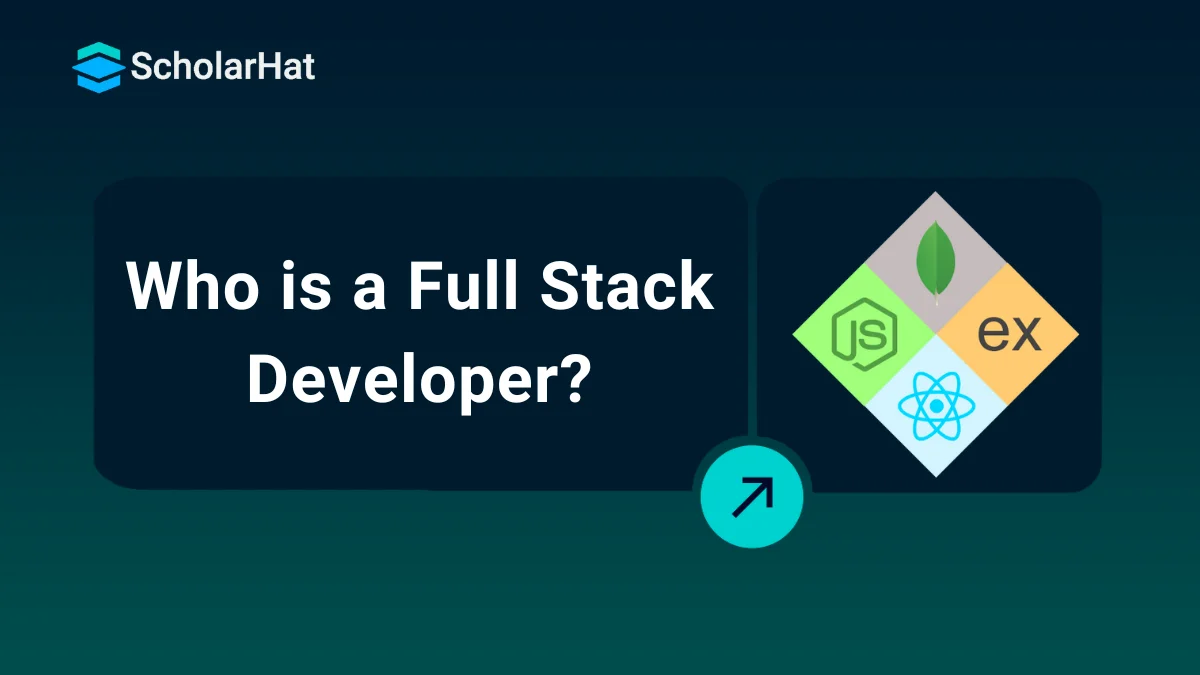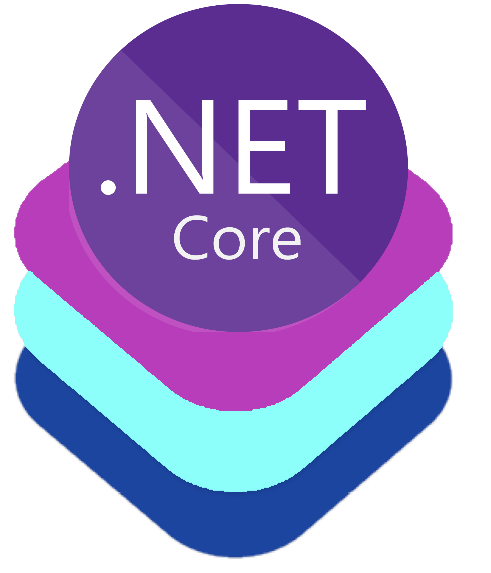27
DecWho is a Full Stack Developer? A Complete Guide
Full Stack Developer: An Overview
Full-stack development is a huge part of the IT world now, and many new and evolving technologies continually push the limits of what a full-stack developer can create. Staying on top of cutting-edge technology and techniques in the full-stack development field is one of the many exciting aspects of working in this requirement.
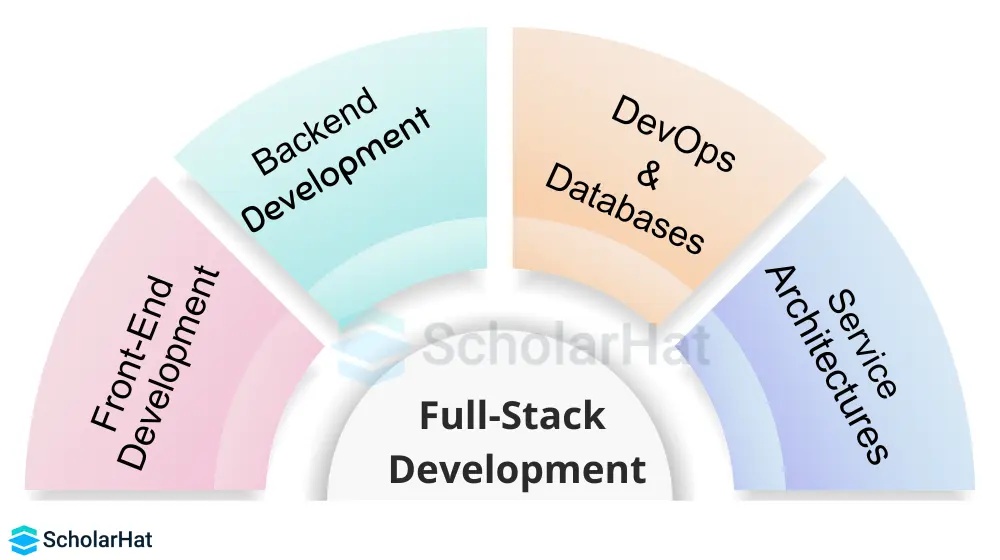
Basically, A full-stack developer works with the front-end and back-end of a website or an application. The full-stack developer handles projects anywhere from database design, to user interface design, and development. During a project’s planning phase developer may work directly with clients to understand project requirements. In this full-stack tutorial, we will see A complete guide for full-stack developers But before that first, let's see What is Full full-stack developer.
Read More -
> Full Stack Developer Interview Questions And Answers
> Java Full Stack Developer Interview Questions and Answers
Who is a Full Stack Developer and What do they do?
- A full-stack web developer is a person who is capable of developing both client and server-side software.
- He is the one who has a thorough understanding of HTML and CSS, JavaScript, jQuery, Angular, or Vue) and programming a server such as PHP, ASP.net, Python, or Node.
- When we say “full stack”? It means, a collection of tools, technologies, and programming languages required to develop and deploy projects.
- A full-stack developer has the power to complete a product independently.
- This developer can handle the work of front-end UI programming and development, databases, and servers.
- They also work on native application stacks, mobile stacks, or web application stacks with full-stack web developer skills.
- So, instead of a front-end or back-end developer, we can learn the required full-stack developer skills and be able to handle any aspect of app design, from front to back.
A full-stack developer needs to understand back-end and front-end technologies, version control systems, APIs, servers, applications, security best practices, data structures and algorithms, and user interface (UI) design. The developer should have an excellent grip on soft skills, project management, and DevOps. There are different kinds of stack developers they are as follows
MEAN stack
- Front-end framework: JavaScript and AngularJS
- Database: MongoDB
- Web-framework: Node.js
- Back-end web framework: Express.js
LAMP stack
- Operating System: Linux
- Web Server: Apache
- Front-end framework: JavaScript
- Database: MySQL
- Programming and Development: PHP
MERN stack
It consists of JavaScript-based technologies. These are the main components of the MERN stack:
- Database: MongoDB
- Web Programming Framework: Express
- Building UI: Node.js and React
Read More - Full Stack Developer Salary In India
What is frontend web development?
Everything we see on a website, such as buttons, links, animations, and many more, is created by a front-end developer. Their job is to make the vision and design concept from the client side and implement it through the code. Front-end developers are engineers who work with web designs through programming languages such as HTML, CSS, JavaScript, and other CSS frameworks. Front End Developers also make sure the website works well on all devices i.e. making it responsive such as mobile phones, tablets, and other computer screens.
The front end is built by using some specific languages which are as follows:
HTML: It stands for Hypertext Markup Language. Usually, it is used to design the front-end portion of web pages using a markup language. HTML is a combination of Hypertext and Markup language. Hypertext defines the link between web pages.
CSS: CSS stands for Cascading Style Sheets. It is a simply designed language used to simplify the process of making web pages. CSS allows us to apply styles to web pages.
JavaScript: It is a famous scripting language used to create magic on sites to make the site interactive for the user. JS basically is used to enhance the functionality of a website to run cool games and web-based software.
What is backend web development?
The backend is nothing but the server side of the website. The back end stores and arranges data, and also makes sure everything on the client side of the website works fine. Mainly it is part of the website that we cannot see and interact with. The parts and characteristics developed by the backend developer are indirectly accessed by users through a front-end application. Activities, such as writing APIs, creating libraries, and working with system components without user interfaces or even systems of scientific programming, are also included in the backend.
Back End Languages:
PHP: It is a server-side scripting language designed specifically for web development.
C++: CPP is a general-purpose programming language and is widely used nowadays for competitive programming.
Java: It is one of the most popular and widely used programming languages and platforms. Java is highly scalable. Its components are easily available
Python: It is a programming language that lets us work quickly and integrate systems more efficiently.
Read More - Full Stack Developer Roadmap
Full Stack Developer Skills You Need to Learn:
If you want to start your career as a Full Stack .Net Developer, you need to know some mandatory full stack developer skills to perform your job efficiently. For this job role, both hard skills and soft skills are required. The below image demonstrates the required Full Stack .Net Developers skills that will help us perform for this position.
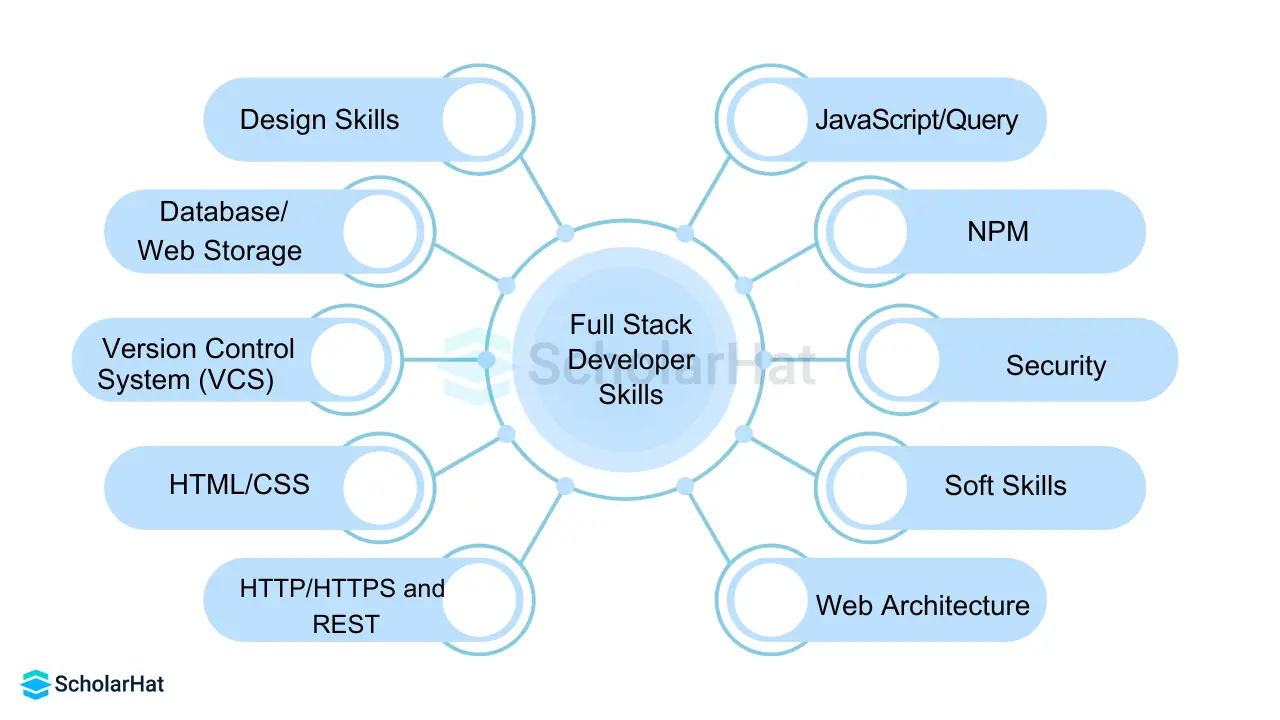
1) Choosing Your Front-End Developer Stack:
Selecting the right technologies for crafting the visual and interactive aspects of web applications is crucial for front-end developers.
2) Strengthening Front-End Development Skills:
Continuously improving coding abilities and familiarity with front-end tools and languages is essential for effective web development.
3) Choosing Your Back-End Developer Stack:
Identifying the appropriate set of technologies and languages to manage server-side logic and data is pivotal for back-end developers.
4) Strengthening Back-End Development Skills:
Enhancing proficiency in programming languages and frameworks for efficient server-side development is vital for full-stack developers.
5) Required Database Skills:
Acquiring expertise in database management and querying, including relational and NoSQL databases, is a fundamental skill for full-stack developers.
6) Required Server/Hosting Skills:
Understanding web hosting platforms and cloud services is essential for deploying and maintaining web applications effectively.
7) Choosing Full Stack Developer Frameworks:
Exploring and mastering frameworks like Angular, Django, Ruby, or Node.js empowers full-stack developers to build robust and scalable web applications.
8) Building Project Management Skills:
Developing effective project management skills ensures timely and successful completion of web development projects.
9) Mastering Version Control Skills:
Proficiency in version control systems like Git enables developers to collaborate seamlessly and manage code changes efficiently.
10) Soft Skills for Full Stack Developers:
In addition to technical skills, effective communication, multitasking, time management, and teamwork are crucial for full-stack developers to excel in their roles.
11) Personality Traits of a Full Stack Developer:
Being a problem solver, a good communicator, resourceful, organized, flexible, and a lifelong learner are valuable personality traits that contribute to a full-stack developer's success.
Why become a full-stack web developer?
- Full-stack development opens a multi-faceted scope for growth
- Full-stack development is one of the highest-paid jobs
- Full-stack development enables rapid project delivery
- Full-stack development is all about building versatility
- With greater productivity comes greater responsibility
How to Become a Full Stack Developer: Step-by-Step Guide
Let us walk into the detailed guide toward becoming a professional full-stack developer
1. Select a Tech Stack
This depends on what you want to achieve from the product, what kind of performance you expect from the web application, and what the client wants, amongst other factors. In Full-stack development, there are several tech stacks for both front-end and back-end development. Below are some of the popular tech stacks:
MERN Stack: MERN stands for MongoDB, Express, React, and Node, after the four key technologies that make up the stack.
MongoDB: A NoSQL document database. Unlike a SQL database, it uses key-value pairs instead of columns and rows to store data.
Express(.js): A Node.js web framework used to build backend apps and APIs using JavaScript.
React(.js): A client-side JavaScript framework used to build the user interface.
Node(.js): The premier JavaScript web server.
1.) MEAN Stack:
Made up of Angular (front-end framework), Express (back-end framework), Node.js (back-end run-time environment), and MongoDB (database), MEAN Stack is a full-stack JavaScript open-source solution that helps developers use better practices while working with popular JavaScript components.
2.) Full Stack .NET:
It refers to the practice of utilizing the .NET framework across both the front-end and back-end components of a web application. It involves working with various technologies and frameworks within the .NET ecosystem to develop end-to-end solutions.
| ▷ Full-Stack .NET Developer Certification Training Course (Bestseller ⭐) |
3.) Full Stack Java:
A full-stack Java developer writes code in all three layers of a web-based application: the front-end, the back-end, and the database layer.
2. Front-end Technology Roadmap
A Full Stack developer must be familiar with key front-end technologies and frameworks such as:
Front-end languages
HTML: Used to structure a webpage.
CSS: Used to style a webpage.
Javascript: Used to make the webpage interactive.
TypeScript: A Superset of JavaScript that adds more helpful features to program robust programs.
JQuery: A javascript library with various functions to make front-end development easy.
Front-end Frameworks
React: Also known as ReactJS, React is a famous front-end JavaScript toolkit for creating user interfaces and associated components.
Angular: It is a component-based framework for building scalable online applications and a collection of well-integrated tools and modules for developers.
VueJs: Suitable for both simple as well as complex applications.
3. Backend Technology Roadmap
A Full Stack developer must be familiar with key back-end technologies and frameworks such as:
Back-end languages
Java: A programming language used for developing enterprise-scale web applications.
Python: It is one of the most popular languages among developers and has been used in a variety of fields.
Node.js: It allows developers to use JavaScript to write server-side code, through which they can write APIs.
Back-end Frameworks
Some of the common frameworks that are used in backend development are:
- ASP.NET Core
- Node.js
- Spring Boot
- Laravel
- Ruby on Rails
- Django
4. Databases
Databases are collections of organized data stored on a computer system. There are several types of databases, including relational, NoSQL, object-oriented, hierarchical, network, and graph databases. Relational databases use a tabular structure to organize data, while NoSQL databases are designed to handle large volumes of unstructured data.
5. Version Control System
A version control system is a tool that helps both the backend and frontend developers collaborate and control the changes made over time. It also gives details about what kinds of changes should be made and by whom. Therefore, a version control system enhances the project speed by allowing developers to interact, remove the possibility of errors, and recover the code if any accident occurs.
The following are the version control platforms that are often used for backend development.
- Git
- GitHub
- GitLab
- BitBucket
6. Understand Web Security
Along with developing websites and applications, it's also important to secure them. Learn about common web security vulnerabilities and how to prevent them. Understand concepts like cross-site scripting (XSS), cross-site request forgery (CSRF), and secure authentication practices.
7. Get Familiar with DevOps
Learn about deployment processes and tools like Docker and Kubernetes. Understand Continuous Integration/Continuous Deployment (CI/CD) practices to automate build and deployment workflows.
8. Get Certified
Earning a certification may improve your chances of getting hired or promoted.ScholarHat offers you various certification courses to make your dream of becoming a full-stack developer true.
- Angular Certification Training Course
- React JS Certification Training
- React Frontend Developer Certification Training
- Free HTML & CSS Course
- Free Node.js Course
- Free JavaScript Programming Course
- Full-Stack .NET Developer Certification Training Program
- Free Java Programming Course
- Data Structures Certification Training
9. Build a Nice Portfolio with Projects
As a software developer, building a strong portfolio with projects is crucial for demonstrating your skills and experience to potential employers or clients. Focus on creating high-quality projects that solve real-world problems and demonstrate your expertise.
10. Take an Internship
Internships are an amazing opportunity to gain real-world experience, learn new skills, and network with industry professionals. Through internships, you get to work on real projects and collaborate with experienced developers, explore different industries and technologies, gain valuable experience, expand your network, and increase your chances of success as a software developer.
11. Develop a Good Network
Developing a good network is crucial for finding job opportunities and advancing your career. Networking involves building professional relationships with people in your industry, such as colleagues, mentors, recruiters, and alumni. Networking can be done both in-person and online through social media platforms such as LinkedIn.
Benefits of Becoming a Full-Stack Developer.
The benefits of full-stack development professionals,
Job Demand is high
Full-stack developers are high in demand right now. Full-stack developers work on all three stages of the process: display, logic, and database.
Creative Flexibility
In this field, developers are well-versed in a variety of development topics. They will have greater flexibility in their work. In short, They have greater control over the product they're working on as they are well-versed with both sides.
Excellent Remuneration
Full-stack developers in India earn about 6 LPA on average these days. For specialists with a lot of knowledge and expertise, it also can reach up to 14 LPA.
Increased Productivity
knowledge of numerous technologies is one of the qualities of a full-stack developer. Full-stack developers are familiar with all of them, whether it's adding graphics to a web page or constructing a database.
Full Stack Developer Job Roles/Titles
- Full Stack Developer
- Web Developer
- Software Engineer
- Front-End Developer
- Back-End Developer
- JavaScript Developer
- UI/UX Developer
- Tech Lead or Lead Developer
- DevOps Engineer
- Solution Developer
- Application Developer
- System Architect
How much does a full-stack developer earn?
The average salary for a Full Stack Developer is ₹6,75,000 per year in India. The average additional cash compensation for a Full Stack Developer in India is ₹75,000, with a range from ₹20,000 - ₹1,00,000.
Full Stack Developer Tools
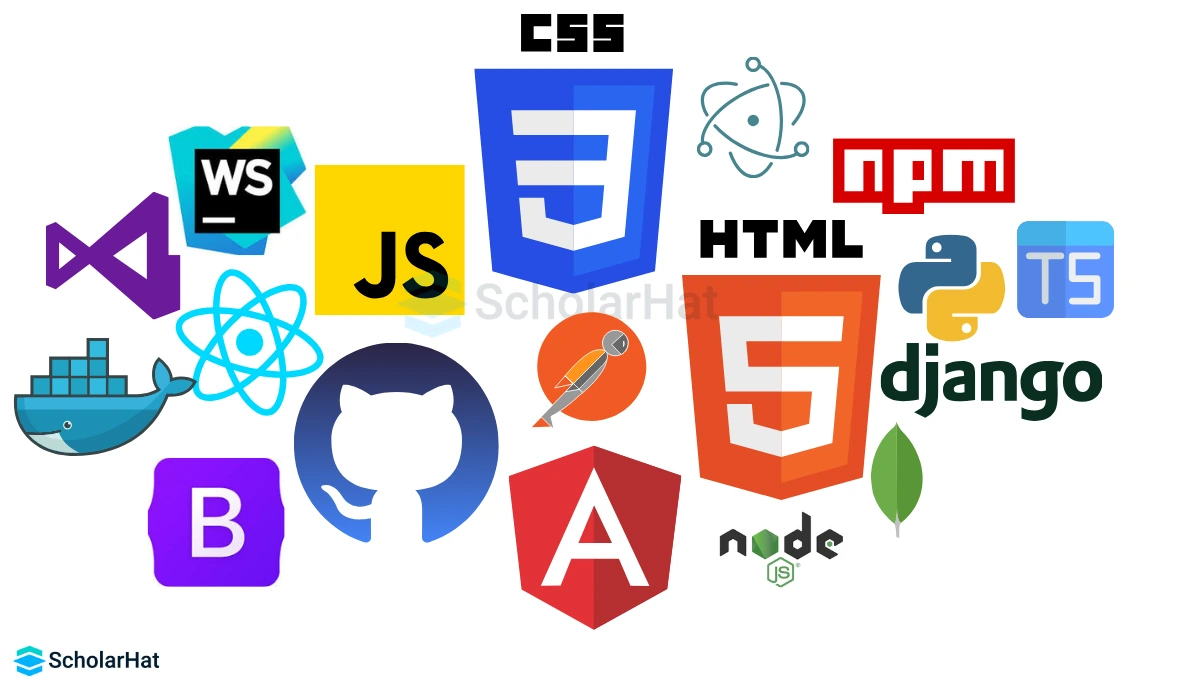
Summary
So, now I hope that you have a complete vision regarding the journey of becoming a full-stack developer. The only requirement here is dedication and consistency. There may come many a time that you won't be able to understand many concepts. Just remain patient and try to understand calmly. You will surely get through it.
FAQs
Take our Fullstack skill challenge to evaluate yourself!

In less than 5 minutes, with our skill challenge, you can identify your knowledge gaps and strengths in a given skill.

